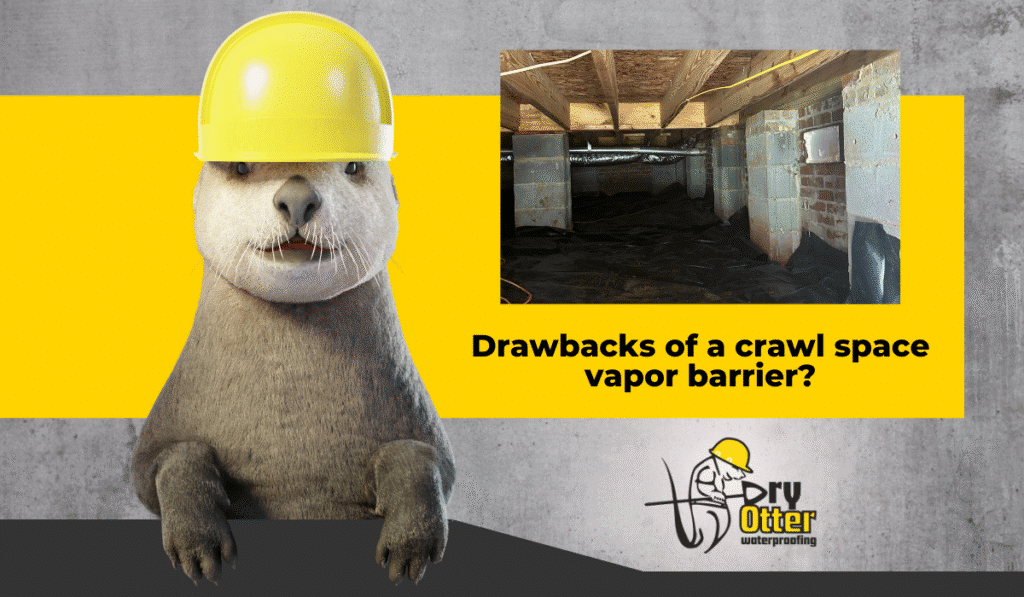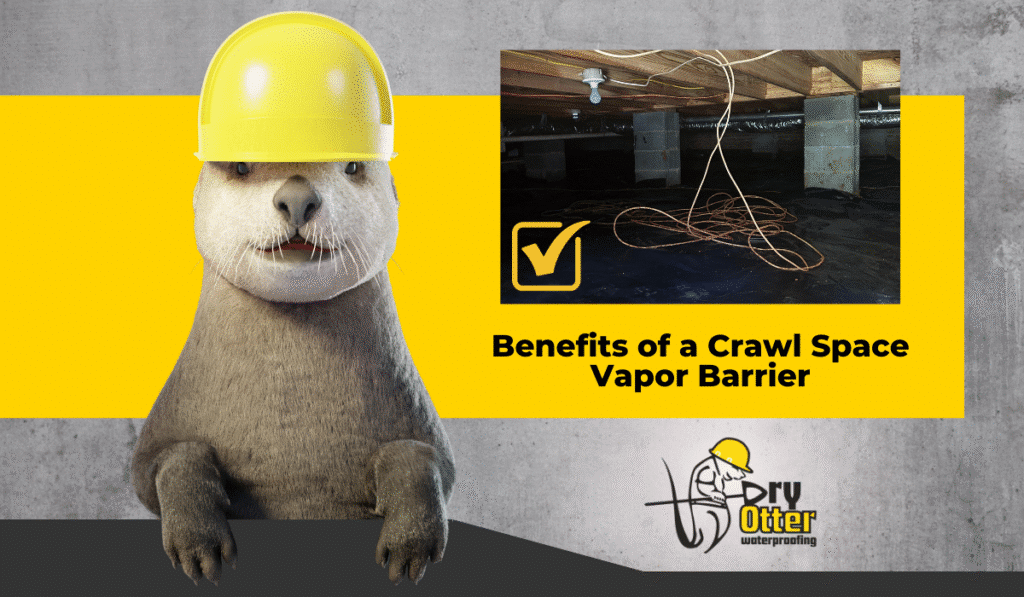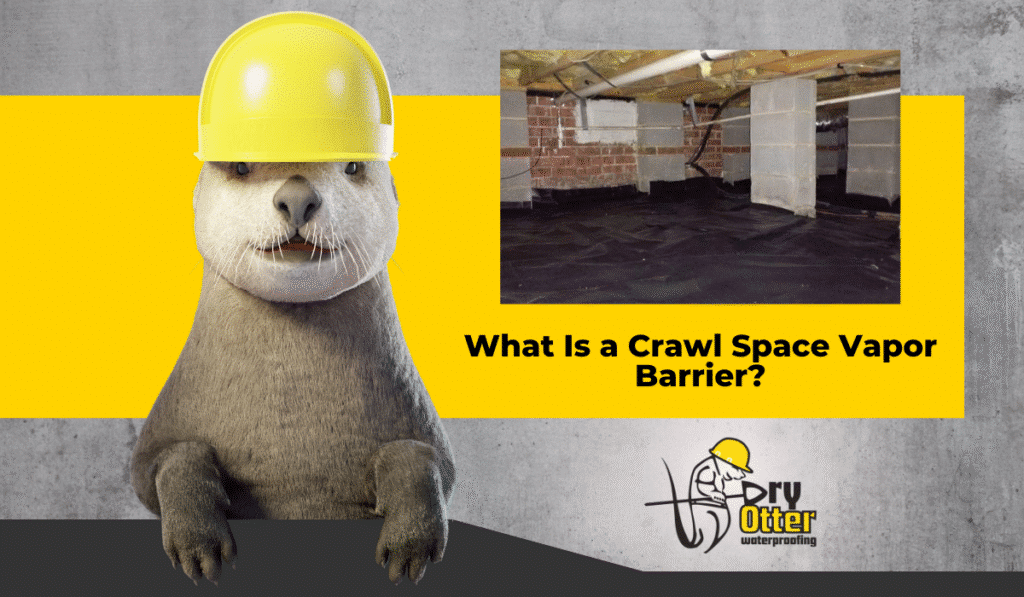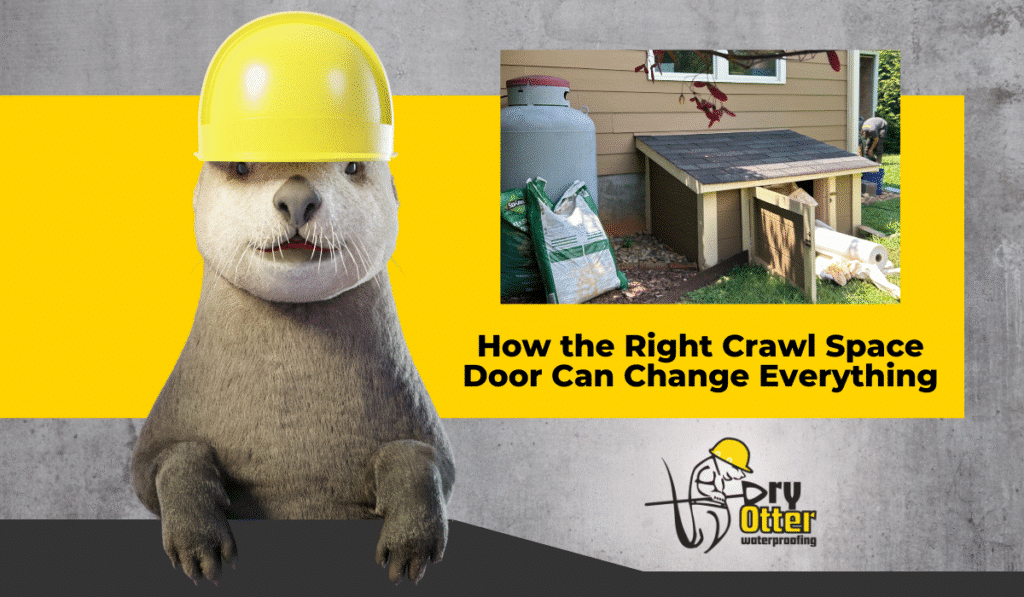Efflorescence is a white, powdery substance that often forms on concrete or brick surfaces. The salts in these materials crystallize, creating white lines.
If you notice concrete efflorescence, it should be removed. And more importantly, the root cause should be addressed because it signals water intrusion.
This article will discuss everything you need to know about efflorescence and how to address it.
What is Efflorescence and Why Does It Form?
Efflorescence is a white, powdery substance that appears on concrete, brick, and other masonry surfaces.
It is caused by the crystallization of salts in these materials or by absorption from the surrounding environment.
Efflorescence is when water moves through concrete, bringing salts to the surface and causing crystallization. Here is a breakdown of the process:
- Water absorption: Concrete, brick, and other masonry materials are porous, allowing water to penetrate their surfaces. Rain, groundwater, and humidity can cause water absorption.
- Salt: As water moves through these materials, the salt dissolves. These salts can be part of the original building material or absorbed from the environment.
- Salt migration: As the salts dissolve, water carries them through the concrete, brick, or other material.
- Evaporation: Once the water reaches the building material’s surface, it evaporates, and the dissolved salts become more concentrated.
- Crystallization: The salts’ concentration has increased to the point that they can no longer remain as they are, so they begin to crystallize. These crystallized salts form a white, powdery deposit on the surface of the concrete or brick, known as efflorescence.
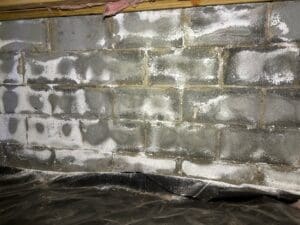
Step-by-Step Guide to Removing Efflorescence
The first step in removing efflorescence is safety. If you use harsh chemicals, wear gloves, eye protection, and respiratory protection.
Dry brushing: Use a clean, stiff brush to remove as much of the efflorescence as possible. Scrub all areas and remove any debris.
Cleaning solution: Neutralize and clean the area with a solution to neutralize the alkaline salts that cause the efflorescence. A simple solution like vinegar and water usually works. You may need to use muriatic acid or a commercial concrete/brick cleaner for tougher stains. Always follow the instructions listed on the label.
Application: Apply your cleaning solution using a spray bottle or brush and cover the affected areas. To effectively remove efflorescence, allow the solution to sit for about 10-15 minutes, or follow manufacturer instructions if using a commercial cleaner.
Rinse thoroughly: Always rinse the treated area with water to remove any residual cleaner and salts.
Avoid Abrasive Methods: A word of caution: It is best to avoid harsh chemicals or pressure washing, as they can damage the surfaces you are trying to clean. Only in severe cases should you consider these methods, and they should be used sparingly.
Why You Should Focus on the Water Source
The Real Danger: Water Intrusion: It is important to always look to the source of an issue. Efflorescence indicates a water problem that can lead to serious health consequences like mold, mildew, and structural damage.
Health Risks: Ignoring water intrusion can lead to serious respiratory problems, especially if you already suffer from asthma or other chronic conditions. Mold growth from water intrusion is a severe health risk affecting your whole family.
Preventing Recurrence: Cleaning existing efflorescence isn’t enough. Unless you discover the cause of the water intrusion, efflorescence will return, causing all the same issues.
Professional Solutions to Combat Water Issues
To effectively stop brick or concrete efflorescence, your best line of defense is to explore professional solutions to prevent water intrusion.
Waterproofing Your Home: As a homeowner, one of the best investments you can make is waterproofing your basement or crawl space to stop water at its source.
A professional company like Dry Otter Waterproofing has proven waterproofing systems that can keep your basement or crawl space safe and dry.
Long-Term Benefits of Waterproofing: Water intrusion can devastate your home’s structural integrity and your family’s health. By installing a water management system early, you can save your home from expensive structural damage before it’s too late.
As discussed in this article, efflorescence is more than a cosmetic problem—the signs of efflorescence point to a water intrusion issue that should never be overlooked.
Our guide outlines steps to effectively remove efflorescence on your concrete, brick, or other building materials.
After removal, it’s important to contact a professional company to determine the causes of your water intrusion.
Dry Otter Waterproofing is Charlotte’s top-rated waterproofing, mold remediation, and foundation repair company. We have years of experience helping homeowners deal with unwanted water problems.
Our waterproofing systems will keep your basement and crawl space safe and dry. Don’t compromise your health, safety, or the structural integrity of your home.
Call Dry Otter Waterproofing today for a professional consultation to permanently solve all your water issues.



